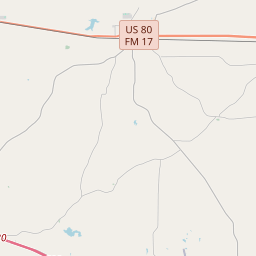Mineola







Since its establishment in 1873, the community of Mineola has been tied historically to the railroad and transportation industries. The Texas & Pacific Railroad planned to connect Longview and Dallas by rail, and began building west in 1872. Meanwhile, the Houston & Great Northern Railroad built northward from Troup. Several communities developed near anticipated depot sites, though they declined when the two railroads joined. The site was named Mineola; various stories recount the naming of the new settlement. Additional rail lines soon connected to Mineola, which experienced impressive growth. The rail brought new residents, including a number of immigrant families, and made Mineola a shipping center for agricultural Wood County. The growth sparked the establishment of various institutions, including a newspaper, the Mineola Monitor; churches, beginning with St. Paul's Baptist Church in 1871; a city cemetery, founded in 1873; a school system started in 1875 and becoming public in 1881; and First National Bank, which organized in 1898. An 1888 fire destroyed 18 buildings downtown, but the community quickly recovered. In the early 20th century, transportation continued to affect Mineola, as the federal government built U.S. Highway 80 through the town. In 1929, the Texas 7 Pacific terminal in Longview relocated to Mineola; many families resettled here, sparking population and commercial growth. The railroads continued to be vital to the community until they declined in the 1950s. In 1996, Amtrak revived passenger service to Mineola, restoring the town's bond with rail. Today, Mineola continues to be a leading community in Wood County and east Texas. (2008) Marker is property of the state of Texas
As one of the most visible programs of the Texas Historical Commission (THC), historical markers commemorate diverse topics in Texas history, including: the history and architecture of houses, commercial and public buildings, religious congregations, and military sites; events that changed the course of local and state history; and individuals who have made lasting contributions to the state, community organizations, and businesses.
Texas is known for its love of football, and the state has produced many great football players, including legends like Tom Landry, Earl Campbell, and Vince Young.
In the early 1800s, the region attracted settlers from the United States who were drawn to the lush forests and abundant resources. The first permanent European-American settlement was established in 1846, and it was named Quitman after John A. Quitman, a prominent politician of that time.
During the Civil War, Wood County played a significant role in supporting the Confederacy. Many residents enlisted in the Confederate Army, and the area became a center for military recruitment and training. After the war, the county suffered economically, but with the introduction of the railroad in the late 19th century, the economy began to recover.
Wood County's economy primarily relied on agriculture, with the growth of cotton, corn, and timber industries. The establishment of sawmills and the development of the timber industry brought prosperity to the area. In the early 20th century, the discovery of oil and gas reserves further fueled the county's economic development.
Today, Wood County continues to be an important agricultural and industrial center in Texas. The county's history is evident in its charming small towns, historic sites, and natural beauty. The strong sense of community and appreciation for the region's heritage are still evident today, making Wood County a vibrant and inviting place to visit or live.
Wood County Timeline
This timeline provides a concise overview of the key events in the history of Wood County, Texas.
- 1850: Wood County is established by the Texas legislature.
- 1852: The first courthouse in Wood County is built in Quitman.
- 1860: The population of Wood County reaches 4,867.
- 1875: The railroad reaches Wood County, boosting economic growth.
- 1895: The county seat is moved from Quitman to Mineola.
- 1920: The population of Wood County peaks at 19,109.
- 1930: The Great Depression hits Wood County, causing economic hardship.
- 1958: Lake Holbrook is completed, providing a recreational area for residents.
- 1970: Wood County's population decreases to 12,230.
- 1983: Holly Lake Ranch, a gated residential community, is established in Wood County.
- 2000: The population of Wood County surpasses 37,000.
- 2019: Wood County experiences steady growth and continues to be a thriving community.